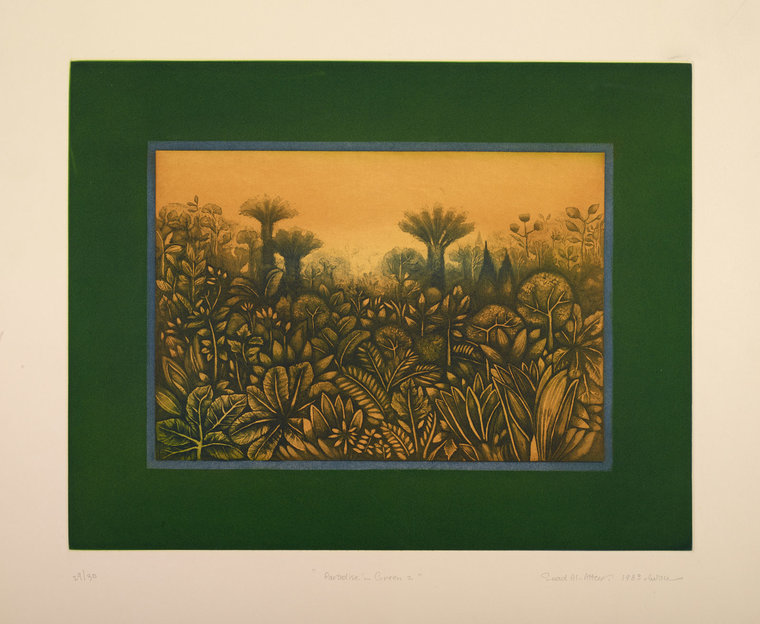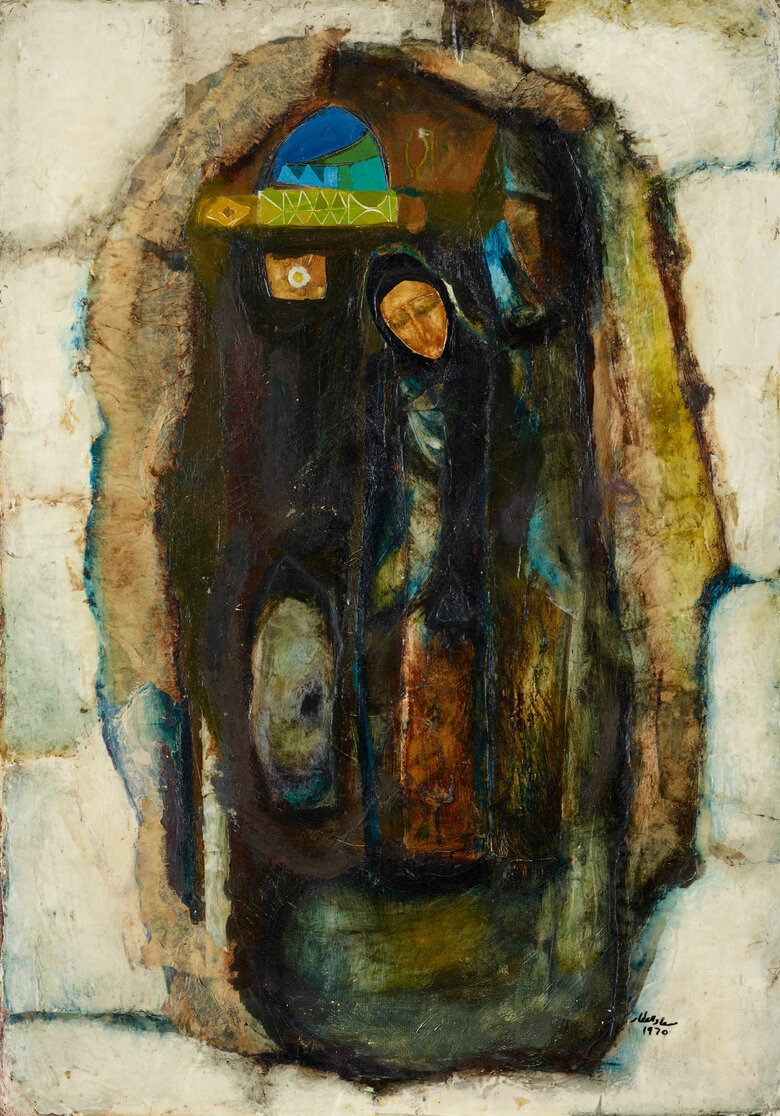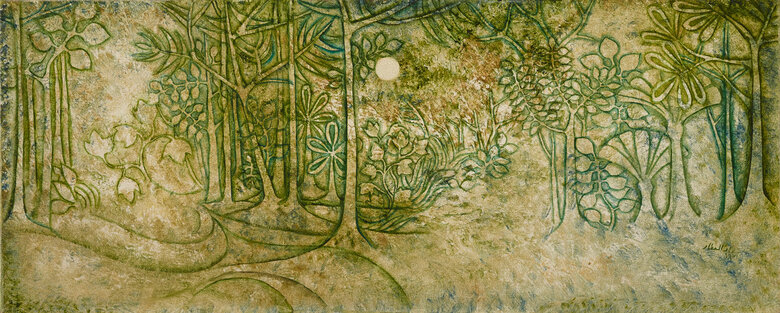Paradise in Green, 1983/n.d. are two etchings that show Al Attar’s mastery in creating richly detailed flora through an intricate printmaking process. The artist adopted etching and aquatint techniques with black and green ink applied on a yellow background, which is encased in a double border of green and blue ink. The framing creates an impression of peering through a window at the landscape, seemingly separating dream from reality.
Al Attar’s prints constantly draw from Iraqi history and mythology. Her dreamlike gold paradise has the intensity of a mystical dawn. Al Attar depicts an untouched landscape, devoid of human figures, paths, or signs of civilization, offering a vision of a primordial garden – a sacred Eden, symbolizing the mythical origin of the world in Iraq. The stylized date palm, thought to be the earliest cultivated tree, recurs throughout the work, connecting the viewer with Iraq as the cradle of civilization. The flowers, rather than adhering to botanical accuracy, emerge from Al Attar’s imagination, reinforcing the notion of a fantastical refuge. For Al Attar, “everyone has a place they want to escape to”. In Paradise in Green, this escape is to an Iraq that either once was or could yet be – a form of refuge.
In Paradise in Green, Al Attar was able to create bold lines achieved through etching:
a technique whereby a metal plate covered in acid resistant wax is scratched with an etching needle, creating an image, and hence exposing the bare metal. The plate is then dipped in acid which eats into the metal plate leaving grooves to hold ink during the printing process.
Variation in tone is created through a technique referred to as aquatint. In aquatint, fine particles of acid-resistant rosin (or resin) are scattered onto the plate which is then heated allowing the rosin to stick. Wax is then applied onto the plate to black out all of the areas to be left white and then dipped in acid. This process is repeated for each shade, from lightest to darkest. In Paradise in Green, the medium of etching complements Al Attar’s two-dimensional perspective, and the layering of four-color printing adds to the ethereal feel.
This meticulous process of printmaking became a poignant means of expression for Al Attar, particularly after she moved to London. She experienced a deep longing for her homeland, a feeling that only grew over time. Although her self-imposed exile felt cold and hard, she was creatively invigorated by new techniques, allowing her “imagination [to take her] back to Sumeria, Mesopotamia, Babylonians, palm trees”. This dual existence allowed Al Attar and her work to exist somewhere in between reality and dream. Through motifs drawn from ancient civilization and myth – such as the Gardens of Babylon and the Garden of Eden – Al Attar explores imaginary landscapes of past and future Iraq, channeling both her heritage and her own mysticality. Her scenes simultaneously “disconcert and reassure” in a tension and premonition that life is fragile and could easily fall apart or be suddenly lost, much like her beloved Iraq.
signed in English and Arabic and dated in English front lower left, titled lower mid with Edition front lower right in English







_SuadAlAttar_Front.jpg)

